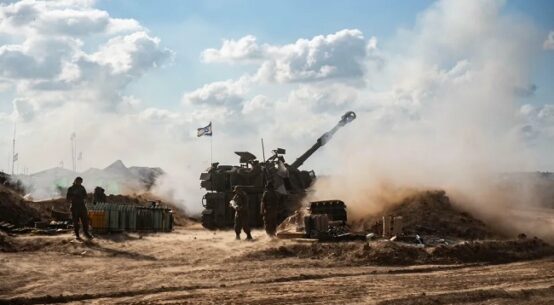After much reluctance, the US and its Western allies last week agreed to provide Ukraine with some of the world’s most sophisticated battle tanks: American-made Abrams, German-made Leopards and British-made Challengers.
But the question remains as to whether these weapons will make a decisive difference to Ukrainian armed forces fighting a relentless battle with one of the world’s major military and nuclear powers.
According to the US Department of Defense (DOD), the new $400 million package announced last week represents the beginning of a contracting process to provide additional capabilities to Ukraine.
The package includes: 31 Abrams tanks with 120mm rounds and other ammunition; Eight Tactical Vehicles to recover equipment; Support vehicles and equipment; Funding for training, maintenance, and sustainment.
Alongside the battalion of Abrams tanks, a European consortium is committing to provide two battalions of Leopard tanks to Ukraine.
The DOD says the United States will “continue to work with our allies and partners to meet Ukraine’s battlefield needs to counter Russian aggression and ensure the continued freedom and independence of the Ukrainian people.”
Speaking from the White House on January 25, US President Joe Biden thanked every member of the Western coalition for continuing to step up.
The UK, he said, recently announced that it is donating Challenger 2 tanks to Ukraine. France is contributing AMX-10s, armored fighting vehicles.
In addition to the Leopard tanks, Germany is also sending a Patriot missile battery. The Netherlands is donating a Patriot missile and launchers.
France, Canada, the UK, Slovakia, Norway, and others have all donated critical air defense systems to help secure Ukrainian skies and save the lives of innocent civilians who are literally the target — the target of Russia’s aggression, Biden said.
Listing the flow of arms to Ukraine, he said, Poland is sending armored vehicles. Sweden is donating infantry fighting vehicles. Italy is giving artillery. Denmark and Estonia are sending howitzers. Latvia is providing more Stinger missiles. Lithuania is providing anti-aircraft guns. And Finland recently announced its largest package of security assistance to date.
Will the on-again, off-again proposal for peace talks and diplomatic negotiations be undermined by the massive flow of new weapons?
Victoria Nuland, Under Secretary of State for Political Affairs, told the US Senate last week “We want to put them in the best possible position so that whether this war ends on the battlefield, or whether it ends with diplomacy, or some combination, that they are sitting on a map that is far more advantageous for their long-term future, and that Putin feels the strategic failure.”
Captain Matthew Hoh, a former US Marine Corps Captain and State Department Officer said: “US and NATO tanks will not serve as wonder weapons to win the war for Ukraine.’
“Rather we should expect a reciprocal escalation by Russia that solidifies the stalemate and threatens expansion of the war. Only de-escalation, ceasefires and negotiations will bring an end to the war,” he added.
Lt Col Bill Astore, a former professor of history, co-author of three books and numerous articles focusing on military history and the history of science, technology, and religion, said a few dozen U.S., British, and German tanks won’t be decisive in Ukraine.
“What is needed is talks not tanks,” he pointed out.
“Talks aimed at ending this war before it escalates further. Talks, not tanks, will help to move the doomsday clock further from midnight and the nightmare of nuclear war,” he added.
Meanwhile, UN Secretary-General Antonio Guterres said January 18 he did not believe there was an opportunity yet, to organise “a serious peace negotiation” between the warring parties in Ukraine, nearly a year on from Russia’s full-scale invasion.
Guterres told the World Economic Forum in Davos, Switzerland, that he remained committed to alleviating the suffering of Ukrainians and vulnerable people in the wider world, still reeling from the conflict’s “dramatic, devastating impacts” on the global economy.
“There will be an end…there is an end of everything, but I do not see an end of the war in the immediate future,” Guterres said. “I do not see a chance at the present moment to have a serious peace negotiation between the two parties.”
Since 2014, the United States has committed more than $29.9 billion in security assistance to Ukraine and more than $27.1 billion since the beginning of Russia’s “unprovoked and brutal invasion” on February 24, 2022, according to DOD.
Ltc Karen Kwiatkowski, formerly at the Pentagon, National Security Agency and a noted critic of the U.S. involvement in Iraq said “the incremental escalation, tank company at a time, by US neoconservatives and NATO chickenhawks is unfocused, reactionary, and virtue-signaling instead of strategic”.
“For these reasons alone, the Western ‘alliance’ is in big trouble,” he declared.
Thalif Deen is a former Director, Foreign Military Markets at Defense Marketing Services; Senior Defense Analyst at Forecast International; and military editor Middle East/Africa at Jane’s Information Group, US.

